Artistic residency aboard Tara: a fruitful cohabitation between artists and scientists
From its first expeditions, the Tara Ocean Foundation has made the Tara schooner not only a scientific laboratory but also a catalyst for new artistic ideas. Each expedition is a shared vision between artists, scientists and sailors who together observe and describe, according to their sensitivity and imagination, the richness of the ocean.
Discover in this article the exploration story of Flora Vincent, scientist aboard Tara and Antoine Bertin, artist-in-residence during the Microbiome mission. Together they created an acoustic performance, an immersive project where everyone talks about their experience.
Art & Science: The emotion of discovery
Nature is a real playground for artists and scientists who find themselves with the same goal: to understand and describe the surrounding world that continues to amaze us. So what’s so different about the artistic and scientific approach? Information such as temperature, salinity, photographs or sounds are collected. By putting them together, a comprehensible message is created revealing the beauty or fragility of an ecosystem. What if artists and scientists were actually inseparable?
For Flora Vincent, “the artists-in-residence on Tara are often similar to the scientists, sailors or journalists on board. They are incredibly motivated and generally very curious about what takes them out of their usual environment. The artists with whom I had the pleasure of embarking, Maki Okhojima, Tara Pacific (2016-2018) and Antoine Bertin, (Microbiomes mission, 2020-2022) were very curious, so I engaged them in my favorite playground which is biology.”
If one of the objectives of an artistic residency is to “make scientific work visible”, this goes much further, as evidenced by Flora and Antoine’s experience. The change of perspective and reference is twofold: the artist discovers a parallel world which opens up avenues for conceptual and practical exploration, but the researcher is also able to change a point of view and approach scientific problems from a different angle, which he/ she had not thought of before — enough to open up new research dynamics!
“From experience, it’s the many gray areas of “what we don’t know” that are challenging; this part of biology which is not yet explained often pleases artists, and scientists too! We have often discussed these aspects: how is it possible that we still do not know this or that, what could the answer look like?”, says Flora.
Personally, the artists take me on an often more philosophical path, which makes me take a few steps back. This was already the case with Maki, and it increased tenfold with Antoine.
Du point de vue de l’artiste, Antoine réalise qu’une résidence artistique permet d’aller au-delà de l’inspiration. “J’ai été très inspiré par les éléments bien sûr, et les manières d’être et de travailler des scientifiques, des marins, et de Marin le correspondant de bord.” Mais à bord ce sont de véritables collaborations qui peuvent se mettre en place. Ces échanges prennent la forme de conversations, d’entraides, de travail scientifique et artistique autour des données recueillies. “La résidence inspire ainsi des idées, des directions, des expérimentations, des esthétiques, des réalisations, et pour moi c’était important que ma démarche de création puisse être autant que possible “utile”.”
From the artist’s point of view, Antoine realizes that an artistic residency allows you to go beyond inspiration. “I was very inspired by the elements of course, and the ways of being and working of scientists, sailors, and Marin the on-board correspondent.” But on board, real collaborations can be set up. These exchanges take the form of conversations, mutual aid, scientific and artistic work around the data collected. “The residency thus inspires ideas, directions, experiments, aesthetics, achievements, and for me it was important that my creative process be as “useful” as possible.”
It’s useful for scientists to put their work into perspective, and useful for the Tara Foundation team to further their goals. From discussions of all kinds, the usefulness for ecology can gradually be defined.
The artistic residency aboard Tara makes it possible to create a first spatio-temporal “cocoon” conducive to the bubbling of ideas, the core of which is of course the human links established among the 14 people aboard, all from varied backgrounds but who eventually will be sailing side-by-side.
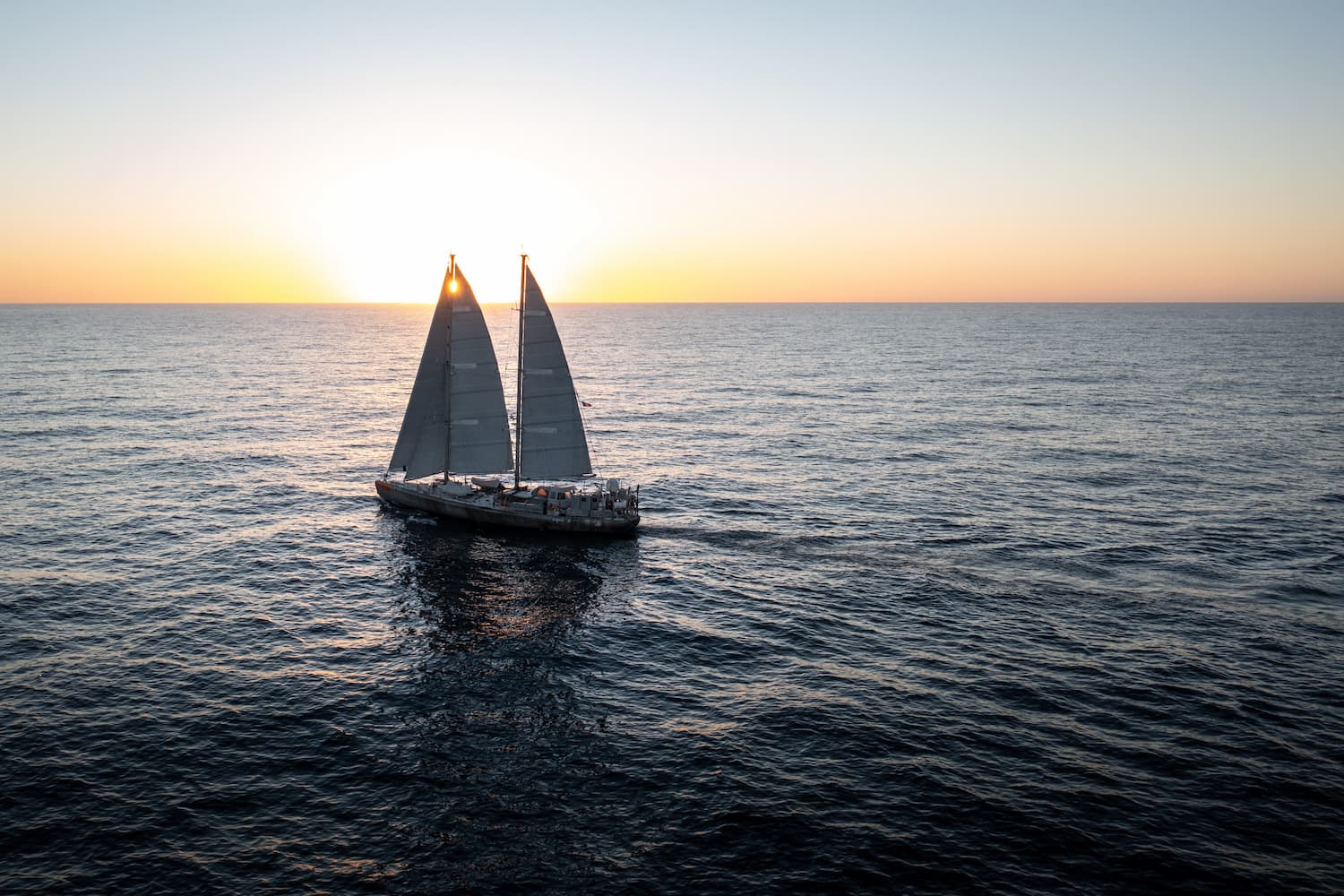
From idea to project: an acoustic performance
Tara‘s scientific project supports many values that are close to Flora’s heart as a scientist: collaboration between disciplines and continents, the desire to share and to protect, also gives rise to a form of ambition that strives to achieve audacious scientific projects on a very large scale.
She confides that during an exchange on Tara’s deck with Antoine, she concluded that as a scientist who likes to share knowledge, she often feels stuck in the classic formats of communication: PowerPoint presentation, computer graphics, video… But for Flora, “We never really share emotions. Only when we put our mind to it, we manage to transmit enthusiasm, passion in our presentation, but most of the formats that I allow myself to use are always quite “formal”.
She wanted an Art & Science collaboration, not only to share her scientific knowledge, but also to explore new directions.
Antoine has always wanted to contribute to the protection of the Ocean and to join Tara as resident artist. This was an opportunity for him to be able to work with a multidisciplinary team. Both Flora and Antoine were convinced their respective disciplines could complement each other. For Antoine, “It was a chance to be able to work with a scientist like Flora, who takes the time and cares to think outside the box, while keeping her strong scientific benchmarks.” They have woven together, little by little, a kind of art-science creation process, going beyond the simple use of artistic practice as a tool for popularization. The objective of their collaborative project was to move from a vertical discussion to a horizontal exchange.
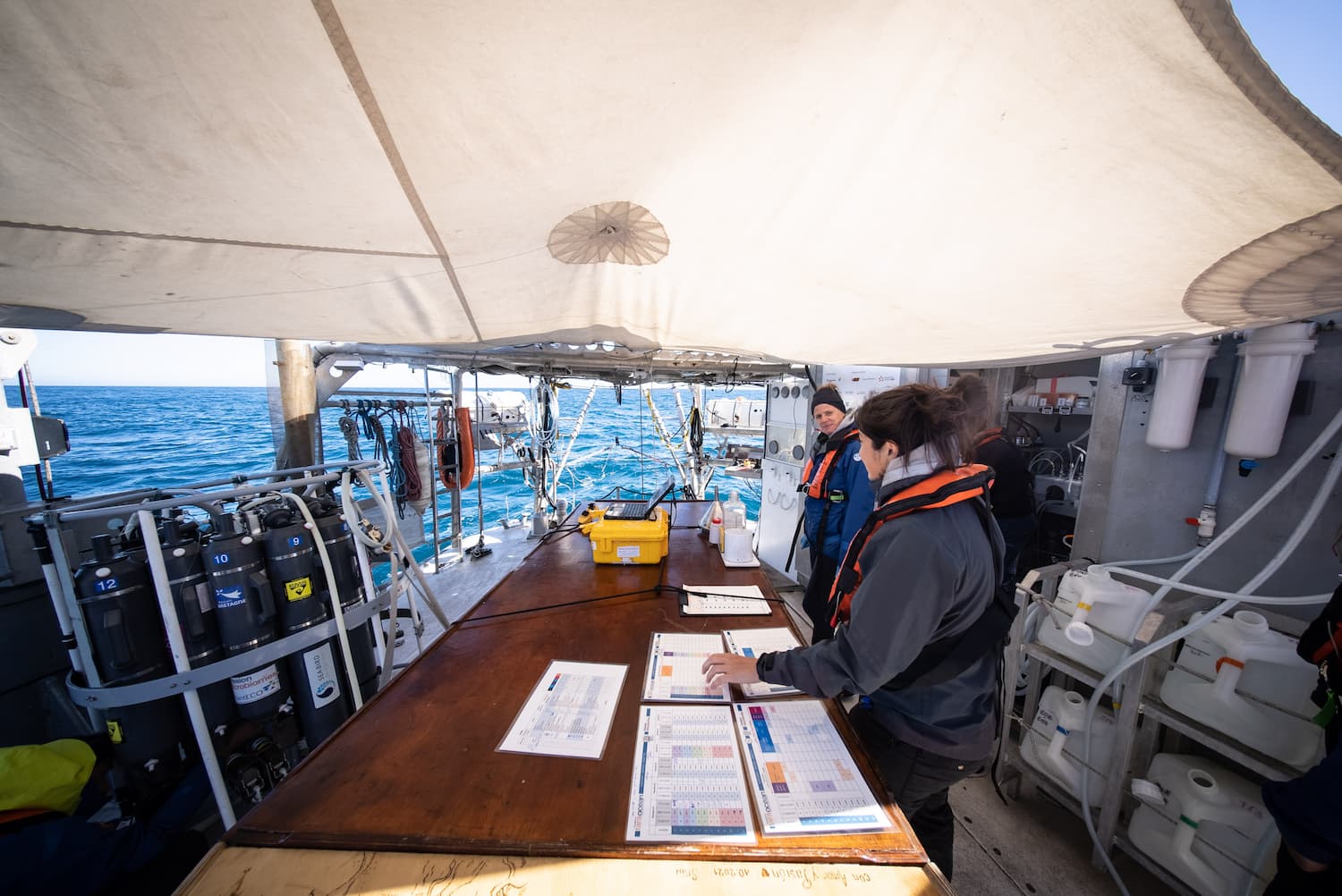
A collaboration to explore the unknown
Antoine and Flora have many common traits:
- the desire to explore unknown territories;
- intervals of introspection followed by rich creativity;
- open and caring communication.
They talked a lot. Antoine, the artist, knew how to accompany Flora, the scientist: “Antoine’s benevolence was essential for me, because I was completely out of my comfort zone, even if to a certain extent our exchanges sometimes resembled scientific session- brainstorming…”
Flora also brought a lot to Antoine. She overflows with energy both when she collects data in particular conditions, and in her way of sharing theoretical reflections. She knows how to invent new ways of working as a team but also have fun speculating on possible futures and laughing: “key ingredients”, according to Antoine in artistic processes: “I learned a lot from Flora’s approach. I would like to say that our collaboration happened naturally but, in my experience, many arts and science interactions can remain frozen in the form of artistic answers to scientific questions. As Flora says, getting out of your respective comfort zones, moving forward without really knowing what the result will be and developing this project truly together makes it something special. For my part, working with respect for scientific rigor can sometimes appear as a creative constraint, but in the end it allowed me to go further, in what it is possible to bring to life for different audiences.”
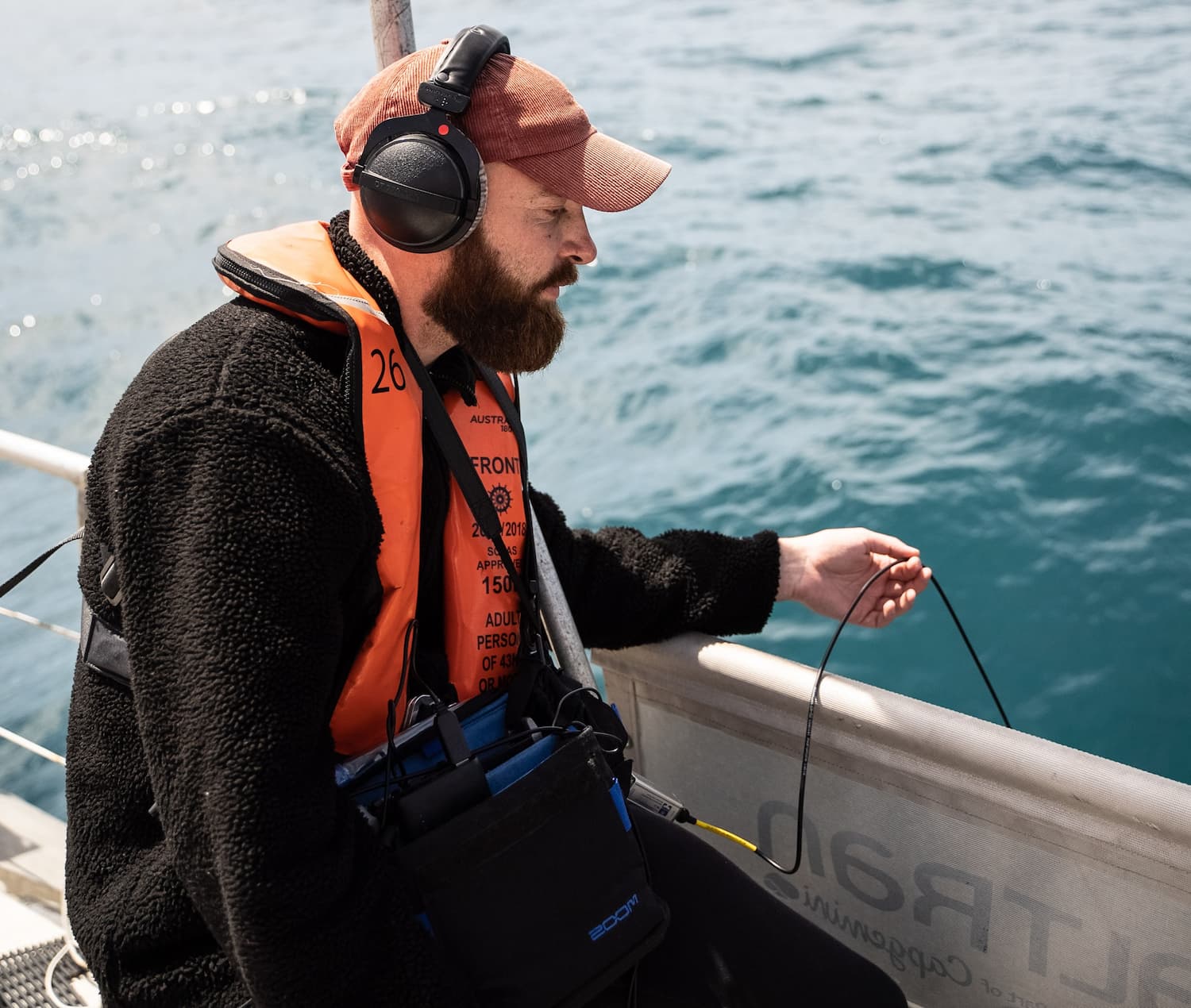
From an artistic meditation to a mediation tool
From a technical point of view, the inspiration came from a meditation session with the starting point: breathing, to move gently towards an introspection anchored in the present time. The sound format is a good vector for transmitting these emotions by focusing one’s attention on a sense of hearing. “But it is also totally mediation, because we deliver rigorous scientific content, a little romanticized of course, but faithful to reality.” explains Flora to us. This acoustic performance also invites a more intimate, personal, even spiritual connection, around an essential subject: our link between phytoplankton and life.
Why was the scientist seduced by acoustic mediation?
“I have been a big fan of meditation for 7 years… When I walk in nature, or swim in the sea, I often stop and just listen. Closing your eyes allows you to let your imagination do the work, there is something very poetic about it!” says Flora.
Flora dreaded moving from a scientific practice to an artistic expression. “I was scared! I feared that it would be a total flop, that it wouldn’t be scientifically advanced enough, or not artistically original enough.” Antoine knew how to be decisive by reassuring Flora from the start about the collaboration: “He is the artist, he knows what he’s doing. I trust him”.
They were able to stage their acoustic performance for the first time during the event organized for the return of the schooner Tara to Lorient, at the end of the Microbiomes mission. A hundred people were able to share this intimate moment between the artist and the scientist.
It was a real challenge for Flora because she had the impression of being “naked”: “I have no problem talking about science in front of 500 people, but creating an intimate relationship with 100 people was really a challenge. I clung to Antoine’s gaze!” Finally, the positive feedback on this collaboration convinced Flora about the true interdisciplinarity of their project and its interest for the public.
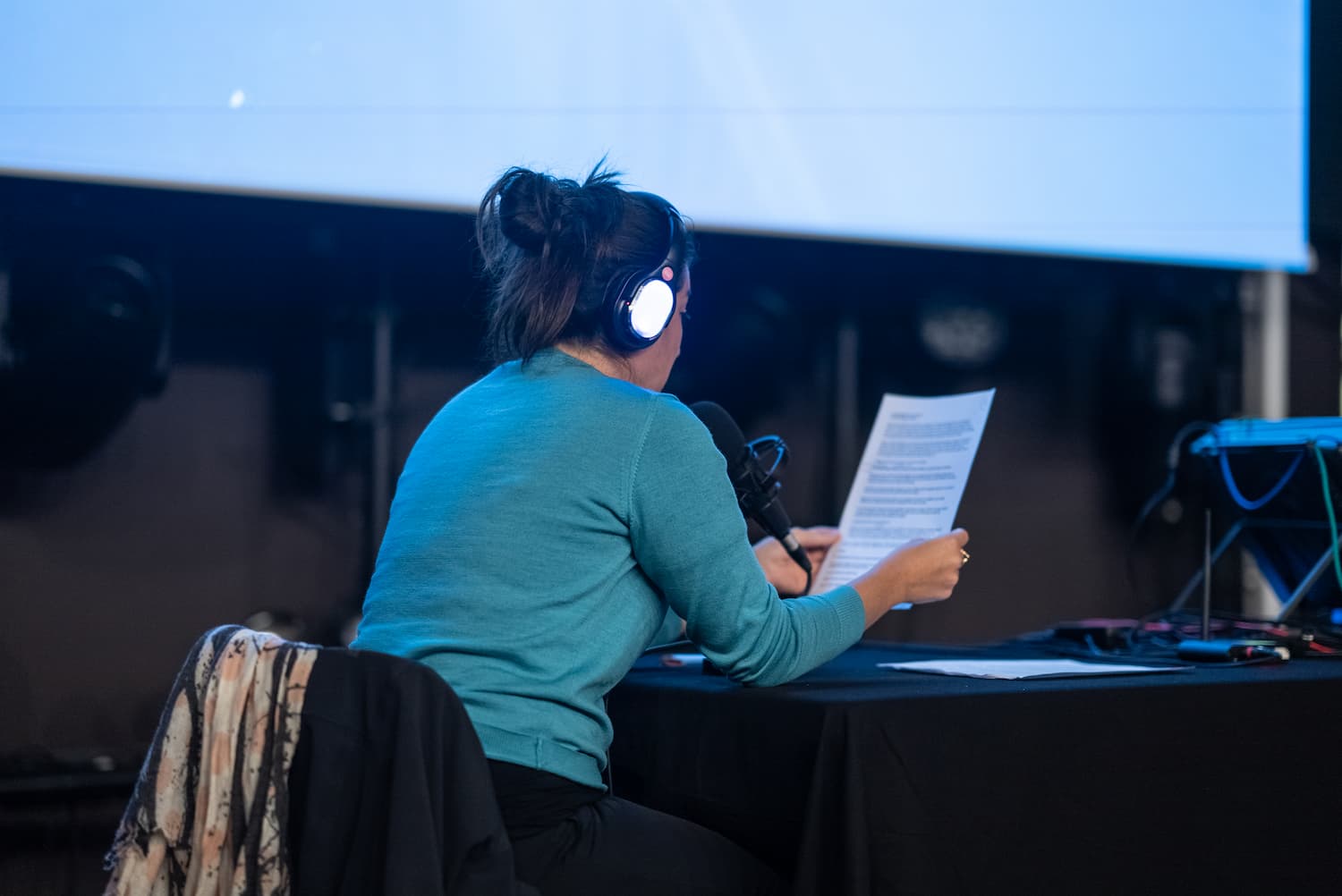
Why did the sound artist want to highlight the scientific story?
As an artist, I find something paradoxical in science: “To touch the vertiginous mysteries of the universe, while working in a disciplined form, objectivity, and calm.” He found that science can indeed take less formal, more fun forms, but the seriousness of the scientific process often takes over the image that the public can have of it. In reality, there is no celebration at the discovery of a star, nor shouts of joy at the discovery of a new species! According to Antoine, “we should be able to experience Science more intensely, together, especially in the context of an accelerating climate crisis. It is the role of activists and artists, along with scientists, to make Science resonate louder than climate inaction and misinformation.”
So together with Flora, they challenged themselves to create a dialogue between sound and science. Listening, acoustic technologies, in the same way as optics (a telescope or a microscope), are tools for exploring the universe that transform our relationship to living things. This dialogue between sound and science is quite natural!
Immersion: from project to artistic and sound production
The spectator experiences a real time hunt for a bloom* thanks to the sounds deployed by Antoine around the voice of Flora, in the manner of a radiophonic composition. Cradled by meditative images of moving water, the listener relies on the power of the voice to dive into the story: “I illustrate this story,” explains Antoine, “from recordings captured during the Microbiomes mission, compositions modulated live from data collected by the scientific team, to ultimately create a living cinematic moment”. Some of the recordings and textures are strong memories of science and humanity aboard. They influenced Flora during her narrative: supporting or disturbing her, making us laugh. The idea is to take the public on board, with them, so that they too can insert their experience between words, sounds, musical textures: “That’s what I find relevant about this collaboration: each performance can be different as audience, scientist and artist relive the crazy adventure of hunting for the coccolithophore bloom. In short, the convolution (two signals, depending on time send back a new signal) of science and sound makes it possible to create deep connections between coccolithophores and humans!”.
Science is often experienced as static. But here, the thrilling story, the excitement of discovery, allows the performance to be structured with twists and turns that transmit to the spectators the emotion felt by reaching the goal in our quest for data!

The Ocean source of inspiration
An invisible world to imagine…
The Ocean inspires the scientist and the artist. Does staging the invisible multitudes of the Ocean, solely through a sound performance, voluntarily sustain the imagination of what is invisible to the naked eye?
Flora and Antoine wanted a pure sound format, so as not to saturate the senses and to make the public’s imagination work. But in a sense, the performance is very visual: things happen on stage and the soundscapes create vivid mental images in everyone’s mind. The sound makes it possible to better see and imagine the coccolithophores. More profound than images that fix a version of reality: “We wanted to leave room for listeners to think about the subject, to put their two cents in, not bombarding them with information in all directions”.
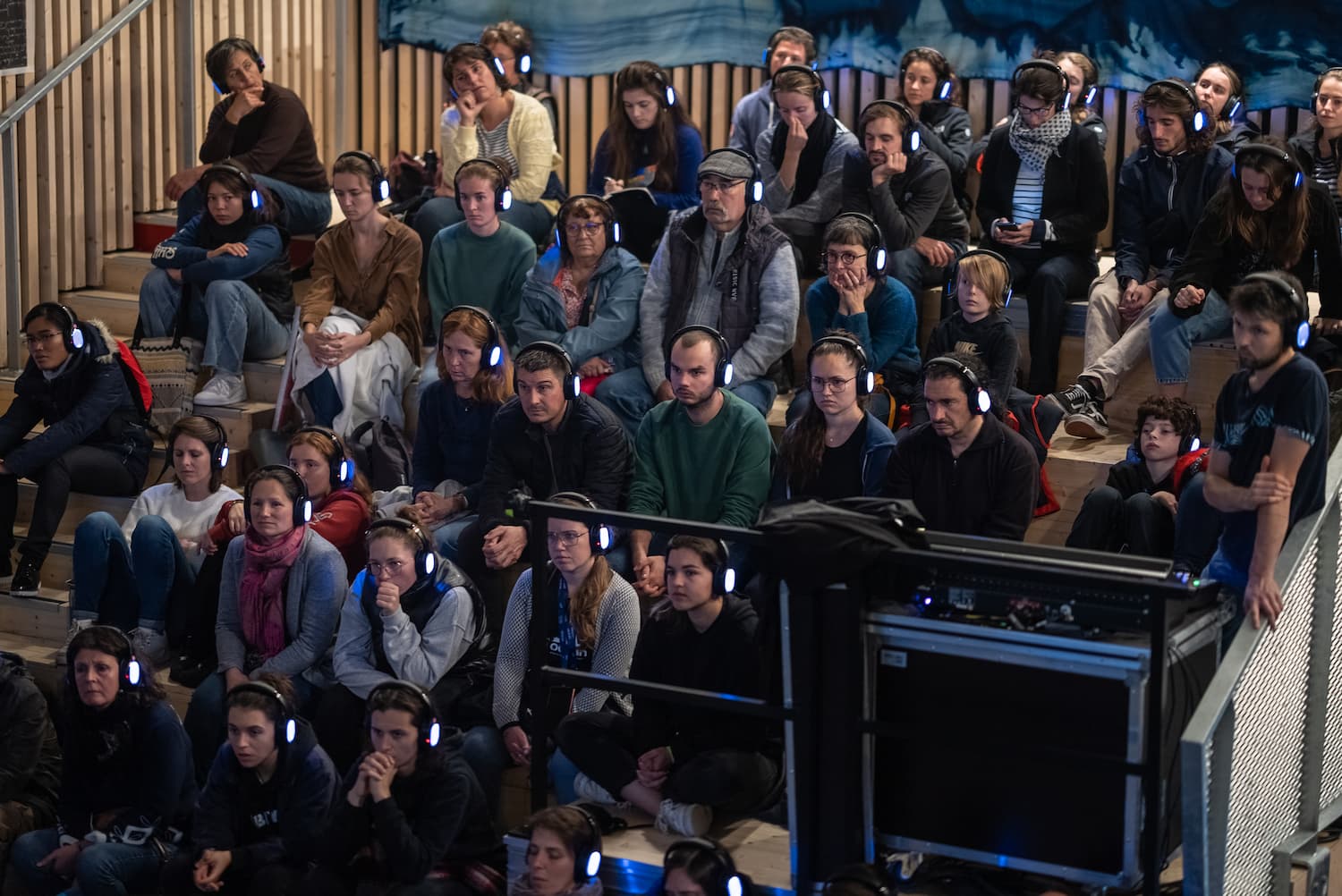
… to better decipher it
The goal of this acoustic performance was to share the scientific approach which can be exhilarating and also the more global perspective of our relationship to plankton, and therefore, of our relationship to living things. Fundamental biology research is sublime in that it focuses on a process that affects us all: Life! Through the story, there is obviously joy, impatience, stress, but I also wanted to make people aware of how much we all are — very small: “I feel this every day: looking at satellite images of blooms seen from space, looking at plankton under the microscope, exploring the diversity of shapes and behaviors of these microscopic beings. Humanity is only there in transit…” confides Flora.
By proposing this artistic work, Antoine aimed to create a link between the public and the phytoplankton. “It is important to know the existence of these micro-beings, and then what? I have a strong memory of the scientists’ love for these micro-organisms: they wouldn’t express it in these terms of course, but in practice they think of them every day, all their lives. Is there a stronger ecological connection than feeling that our lives would be impossible without these microorganisms? It is my privilege as an artist to be able to take as a starting point, as a truth, and not as a hypothesis to be demonstrated, that these living beings, who have been there for much longer than us, are intelligent. They discuss what their place in the world means and know far more about ourselves and the universe than we have yet dared to imagine. It is this intuition and vertigo, as scientific as it is artistic, that I hope this performance will be able to transmit, or at least micro-transmit!”
* A process of rapid concentration of phytoplankton cells (plant plankton) in a body of water. Blooms appear in different places on the planet when there are favorable conditions.
Stories by Flora VINCENT, laboratory director at EMBL & Antoine BERTIN, artist-in-residence on Tara during the Microbiomes mission.
The Tara Ocean Foundation established artistic residencies since its inception. Already more than 50 artists have followed one another on board
The call for artists-in-residence for the upcoming expedition is underway.
